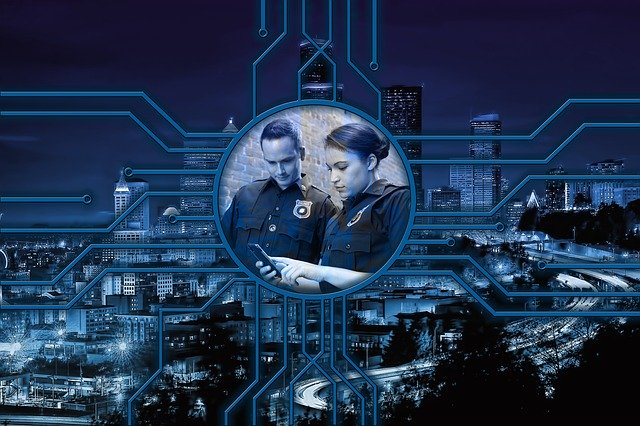Without a specific pandemic plan developed, the Tempe Police Department is tackling COVID-19 in ways that will be looked back on for years to come.
Arizona State University’s School of Criminology and Criminal Justice, School of Social Work, and Morrison Institute for Public Policy brought professors and police professionals together on April 17, 2020 to discuss the impact of COVID-19 on police work and the community in front of a virtual audience of 500 people.
Law enforcement agencies are having to change how they protect and serve their communities amidst the coronavirus pandemic. Many of the changes are similar across departments as recommended by federal and state health leaders.
Tempe Police Chief Sylvia Moir said while the department was not forced to change their staffing model, early action was taken as a precaution to the pandemic.
“We started putting people in remote work early,” Moir said. “We separated those key folks with those certifications that were very unique. Physically, they haven’t seen each other in quite a while.”
Practicing the Centers for Disease Control and Prevention guidelines and social distancing such as wearing face masks are a way police and essential personnel are staying safe. Although police departments are being proactive, the community is seeing a rise in certain crimes.
Tempe has found that there has generally been a reduction in crime, yet domestic violence, trespassing, commercial burglary, aggravated assaults are on the rise.
“When you ask about Tempe, we find that there are crimes that are increasing and there are some crimes that are going down,” Moir said. “It’s going to be something remarkable to study.”
Gov. Doug Ducey’s stay-at-home executive order, designed to curb the spread of COVID-19, is leaving many people in situations where an increase in the number of domestic violence and child abuse has gone up.
Jill Messing, ASU professor in the School of Social Work studies domestic violence says the shelters are full and people are staying there longer. Although at capacity, social workers have other ways of helping domestic violence victims.
“We are seeing that across the nation, rates of domestic violence are increasing,” Messing said. “The Arizona Republic reported that the Phoenix Police said domestic violence calls were about 20% higher this March compared with last March.”
Messing says that social workers are still working hard to provide services through the use of hotlines that victims can call if they are in a domestic violence situation.
“I would encourage police officers to use risk assessment. If we use these tools to place victims in contact with social services, it reduces violence and increases help seeking. If we can reduce the violence we can reduce the calls.”
As time has gone on during stay-at-home orders and crime has eventually climbed up, many wonder when or if police should intervene with following social distancing rules.
Robert Robson, a professor of practice with the School of Criminology and Criminal Justice, talked about the pandemic as a health emergency, and the importance of keeping it that way.
“Police have done really well across the country in letting this stay as a health emergency,” Robson said. “I think it’s very important that law enforcement agencies keep it in that realm as long as they possibly can because you don’t want to get it to a point that it’s a police situation.”
According to a survey conducted by George Mason University (GMU), Over 1,000 U.S. police agencies were asked about the relationships they had with stakeholders (hospitals, fire, EMS, other law enforcement agencies, state and county government, health departments, etc.) and how they communicated.
Prior to the pandemic, less than 15% of law enforcement agencies had started to communicate and have a relationship with public health officials. Building consistent and strong levels of communication lines between stakeholders improved preparedness during COVID-19 for the Tempe Police Department and Tempe Fire Medical Rescue.
Dr. Charles Katz, Watts Family Director of the Center for Violence Prevention and Community Safety at ASU, said communication with public health officials is crucial during this time.
“One of the spots that we probably have had a blind spot with has been with regard to partnerships in public health,” Katz said. “I think that’s going to be a real lesson learned that comes out of this virus.”
Maintaining effective and reliable communication channels among departments has become a way to strengthen efforts to keep the public safe and informed.
Police Chief Moir says that the importance of the relationship that Tempe Fire Medical Rescue has with the medical community has been a benefit.
“I do think that there is something to be said for the relationship in Tempe,” Moir said. “We are really, really lucky and it’s not just luck, it’s purposeful.”




